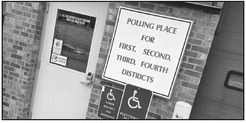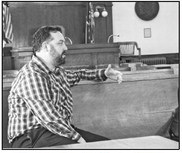It is time to plug the population drain
Wisconsin policy makers at the state, regional and local level must move quickly to plug the population drain that is causing workforce headaches throughout the state.
A recent report from Forward Analytics, the data wing of the Wisconsin Counties Association, says the state is on pace to have 130,000 less working age people by 2030 than it does right now. To put this in comparison, that is roughly equivalent to the entire population of Marathon County, simply getting up and going somewhere else.
The study goes on to note that young people are fleeing the state for places like Chicago as well as the Minneapolis-St. Paul area. While rural northern counties have long felt this demographic trend, it is now impacting the future of more urban areas throughout the state.
In a state heavily dependent on labor to keep the economic engines of agriculture and manufacturing moving, the projected 4% drop in available workers over the next seven years presents a crisis- level scenario for the state’s overall economic health.
While in the short-term, existing workers may benefit from increased wages as companies scramble to fill vacancies, at some point the proverbial tide will turn. Workers are a resource, like any other, and industries will make planning decisions based on the long-term availability of those resources.
The impacts of a declining workforce population will cascade through local and regional economies touching all areas including retail, service, schools, governments and utilities.
The overriding question all policy makers, from the municipal to the state level, must ask themselves is “How do we attract and retain young people in Wisconsin to keep our industries and communities strong?”
Do we have workforce-friendly communities with availably of entry-level housing, local amenities, retail and recreational opportunities that are in demand among younger members of the workforce? Do area schools meet the educational and social needs demanded by young families or are they struggling to maintain the status quo?
Local decisions will impact which communities prosper and which disappear in the coming decades. Those decisions are heavily influenced by a state government that has for too-long made into public policy the micromanagement of local budgets, sacrificing local services, amenities and quality of life on the altar of tax control with the goal of keeping local property taxes artificially and unsustainably low.
Public policy should not be based solely on appeasing long-time homeowners, but should reflect the priorities of young workforce members by promoting availability of adequate and affordable housing, the quality of area schools and the availability of community services.
Wisconsin must move quickly to pivot public policy at the state, regional and local level to address the needs of younger workers and their families. Community leaders must ask the difficult questions and make the choices needed to secure sustainability and growth for generations to come.
Members of The Star News editorial board include Publisher Carol O’Leary, General Manager Kris O’Leary and News Editor Brian Wilson.




